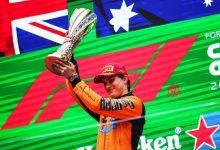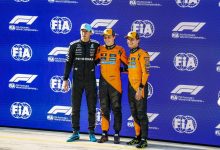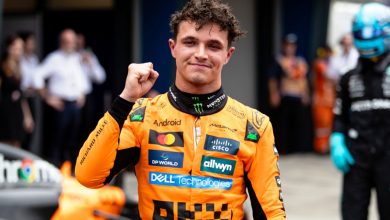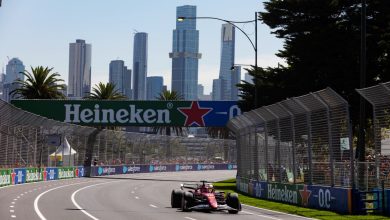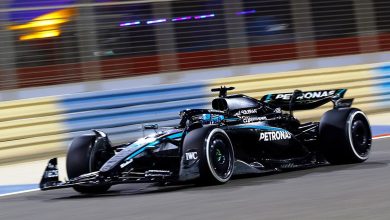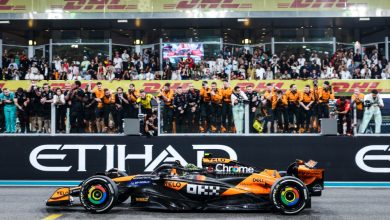Pirelli brings Kevlar-belted rear tyres to Nurburgring
Milan, July 3, 2013:
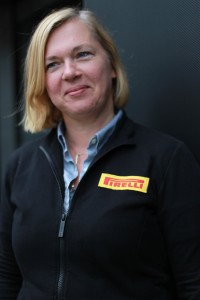
Just one week after the British Grand Prix at Silverstone, Pirelli heads to another legendary venue in motorsport: the Nurburgring in Germany. The tyre nomination is the P Zero White medium and P Zero Yellow soft: a combination not seen since the Chinese Grand Prix in April. However, Pirelli will bring Kevlar-belted rear tyres for both the medium and soft compound to Germany, which have already been tested at the Friday practice sessions in Canada. This moves comes after a series of tyre failures at last week’s British Grand Prix which, as Pirelli has now been able to establish, were caused by a combination of factors like the rear tyres mounted the wrong way around, low tyre pressures, extreme cambers and high kerbs. Even though the 2013 specification of the Pirelli Formula One tyres are completely safe when used in the correct way, the company prefers to bring Kevlar-belted rear tyres to the Nurburgring, as it is a tyre easier to manage.
Paul Hembery: “Surprisingly, the Nurburgring is one of the circuits that we have the least experience of, having only raced there once before in Formula One, but we’re certain that we have chosen the correct compromise between performance and durability by bringing the medium and soft compounds. These were actually the same compounds that we chose for this track in 2011, but since then the tyres have got softer and faster, so we would expect a quicker race time with an average of three pit stops for most drivers. The Nurburgring is not on the whole an especially demanding circuit for tyres but there are still some distinctive aspects to look out for when it comes to tyre management, such as the kerbing on the chicanes. We are expecting a performance gap of 0.8-1.0 second between the two nominated compounds, which should make the strategy options versatile. For this race only, we will bring Kevlar-belted rear tyres, following the incidents at the British Grand Prix. Even though the 2013 high-performance steel-belted version is completely safe when used correctly, the Kevlar-belted version is easier to manage and as long as there is no system in place which allows us to enforce tyre related specifications, like tyre pressures or camber, the incorrect use of which were contributing factors of the tyre failures in Silverstone, we prefer to bring a less sophisticated tyre. From the Hungarian Grand Prix onwards there will be a completely new range of tyres, combining the characteristics of our 2012 tyres with the increased performance of the 2013 specification.”
Jean Alesi: “The Nurburgring is a legendary name but personally I never found the modern circuit particularly involving, although it has changed a lot during the years. It’s a circuit that tends to be quite kind to tyres, so the question of tyre management isn’t a big one: you just drive as hard as you like. There’s always been a good atmosphere though as the fans are very enthusiastic, and I am sure that is just the same now. You have quite a variety of different corners in the lap so it’s mostly a question of finding a good rhythm and stringing them together in the most efficient way. I always thought of Nurburgring as a reasonably straightforward race: it’s not so much a big challenge but more a test of precision and not making any mistakes. If you start in a good grid position and have a clean race you should come away with a good result: you don’t often see big surprises. That’s unless it rains of course: then anything can happen…”
The circuit from a tyre point of view:
Built next door to the legendary Nordschleife, the modern Nurburgring is a fast and flowing circuit that is mostly made up of medium speed corners, with a technical infield section as well. One of the big variables in the region will once more be the weather, so a versatile tyre selection is essential in order to cope with a potential wide range of temperatures.
There are a number of reasonably fast direction changes at the Nurburgring. This increases the amount of lateral energy going through the tyres and therefore heat build-up. That is the biggest reason for wear and degradation on the tyres at the Nurburgring rather traction and braking events, which are on the whole limited.
Frequent rain in the area means that the track is often more ‘green’ than other circuits, particularly at the start of the weekend, as the moisture washes away any rubber that has been deposited on the track. With more rubber laid down, grip increases and wear decreases.
With no tyre data from last year on this circuit, the work of the teams during free practice will be particularly important when it comes to assessing how the latest 2013 tyres react in different temperatures and with different fuel loads. The information gathered on Friday, which is confirmed in the final free practice sessionon Saturday morning, essentially decides the strategy for qualifying and the race.
Further information about the Nurburgring and the demands it places on tyres, as well as more information about how circuits rubber in at each race, can be found on a 3D animated video starring Pirelli’s Racing Manager Mario Isola. This is copyright-free for media use on Pirelli’s Formula One website: www.pirelli.com/f1pressarea
Technical tyre notes:
The first corner is particularly challenging at the Nurburgring, particularly after the start where it is often the scene of accidents. Under acceleration out of it, the back of the car can step out, placing heavy demands on the rear tyres – as they need to guarantee a combination of grip and traction on one of the most technical parts of the circuit that is key to a fast lap time.
Turn seven is also particularly tricky: there is a deceleration of 5g heading into it and the front-left tyre has to do a lot of work here to compensate for the unusual camber of the circuit.
One of the keys to a quick lap is negotiating the kerbing correctly at the NGK Chicane. The drivers hit the kerbs hard, which puts a force equivalent to 800 kilogrammes through the tyre.
The tyre choices so far:
| PZero Red | PZero Yellow | PZero White | PZero Orange | |
| Australia | Supersoft | Medium | ||
| Malaysia | Medium | Hard | ||
| China | Soft | Medium | ||
| Bahrain | Medium | Hard | ||
| Spain | Medium | Hard | ||
| Monaco | Supersoft | Soft | ||
| Canada | Supersoft | Medium | ||
| Great Britain | Medium | Hard | ||
| Germany | Soft | Medium |
Meet the Pirelli F1 Team: Alexandra Schieren, Head of F1 Communications
Alexandra was born and raised in a small town 25 kilometres from Cologne in Western Germany. She studied languages and gained a diploma in translation, but her first job with a connection to motorsport was as an assistant in the media and PR department of Toyota Team Europe in Cologne: which at the time was a major force in the World Rally Championship. Her role came to an abrupt end when Toyota was disqualified from the series for cheating (she had nothing to do with that) and she then moved to London with a job in a communications agency where she tasted a wide variety of motorsport, from International Touring Cars to GT to Formula One. After a few years in London she moved to Paris and was later recruited by the FIA – world motorsport’s governing body – as Media Delegate for Formula One. When Pirelli returned to Formula One in 2011, Alexandra was asked to look after all Formula One-related communication. This involves answering general media requests, organising interviews and media events, overseeing external communications, and working with other departments within Pirelli and the various Pirelli markets. Alexandra lives in the countryside just outside Paris – a pleasant contrast to the often hectic lifestyle of Formula One – and enjoys reading books in different languages to expand her knowledge, with Italian being top of the list at the moment. She loves being in different places, just hates flying to have to get there…
Other news from Pirelli:
Pirelli chairman Marco Tronchetti Provera picked up the ‘2013 Social Responsibility Award’ on behalf of Pirelli from the Foreign Policy Association in New York last week. The award reflects Pirelli’s consistent leadership of the Dow Jones sustainability index in the auto parts and tyre sector.
Pirelli hosted its home round of the Superbike World Championship at Imola last weekend, round seven of the series that is exclusively supplied by the Italian firm. Tom Sykes won both races, catapulting the British driver to the top of the standings.
The latest round of the Pirelli-equipped British Rally Championship, the all-gravel Scottish Rally, took place last weekend. Alastair Fisher won in a Citroen DS3 R3T: a car that he also drives on the Pirelli-backed Citroen Top Driver Series on the World Rally Championship.
The third round of the Pirelli-backed Blancpain Endurance Series took place at Paul Ricard in France. Marc VDS Racing Team’s Maxime Martin, Bas Leinders and Yelmer Buurman took their first win of the season in a Pirelli-supported BMW Z4.
Pirelli also competed in the world’s highest race: the famed Pikes Peak International Hill Climb in Colorado (USA) that finishes at an altitude of 4,300 metres. The Pirelli-shod Porsche 911 of Californian Jeff Zwart finished third in its class and 10thoverall.

